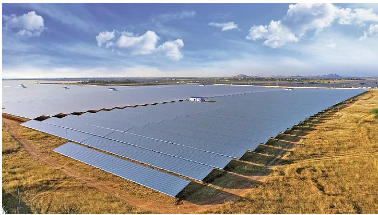Zero takers in Karnataka for PM-KUSUM’s most lucrative solar scheme

PM-KUSUM Scheme – Karnataka Status
Introduction:
- PM-KUSUM (Pradhan Mantri Kisan Urja Suraksha evam Utthaan Mahabhiyan) launched in 2019 to promote renewable energy in agriculture.
- Objectives:
- Reduce agriculture’s dependence on diesel.
- Provide reliable solar power for irrigation.
- Enhance farmers’ income.
Scheme Components:
- Component A: Decentralised solar plants (up to 2 MW) on farmers’ land, with the ability to sell excess power to DISCOMs.
- Component B: Off-grid solar pumps for irrigation.
- Component C: Solarisation of grid-connected agriculture pumps, including feeder-level solarisation.
Karnataka Performance:
- Component A: No takers; zero demand raised even after six years.
- Component B: 41,365 solar pumps sanctioned, only 2,388 installed.
- Component C: 6.28 lakh pumps approved, only 23,133 solarised. Individual pump solarisation under Component C has zero uptake.
- District performance varies: Tumakuru leads (6,160), Chikkaballapur (5,364), Ramanagara (3,788). Low adoption in major agricultural districts like Belagavi, Kalaburagi, Mysuru.
Comparative National Performance:
- Karnataka: 23,761 farmers benefited.
- Maharashtra: 7.27 lakh farmers.
- Gujarat: 1.95 lakh farmers.
- Rajasthan: 1.56 lakh farmers.
- Even small states like Goa show better coverage.
Financial Assistance:
- Central Government: 30% subsidy for Components B & C (higher for hilly and NE states).
- State contribution optional (up to 30%). Balance borne by farmer.
Key Issues:
- Underutilisation of Components A and C.
- Uneven implementation across districts.
- Low farmer engagement despite lucrative incentives.
Significance:
- Highlights challenges in adoption of renewable energy in agriculture.
- Shows importance of state-level proactive engagement and awareness among farmers for achieving scheme objectives.
Updated - 04 Aug 2025, 11:42 am | New India Express
Pradhan Mantri Kisan Urja Suraksha evam Utthaan Mahabhiyan Karnataka Component A Component B Component C Solar Pumps Solar Irrigation Renewable Energy Farmer Income Diesel Reduction Grid-Connected Pumps Off-Grid Solar Pumps Feeder-Level Solarisation Central Subsidy State Contribution Farmer Engagement Underutilisation Agricultural Development UPSC Current Affairs 2025